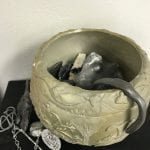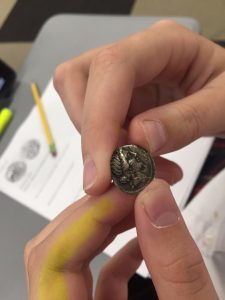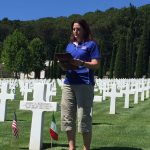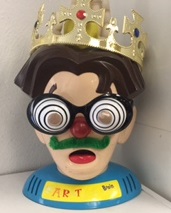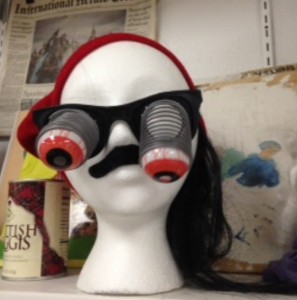One of the National Geography Standards is a concept called mental mapping – the idea that as citizens of the world, we should be able to “mentally organize spatial information about people, places, and environments and must be able to call upon and use this information in appropriate contexts.” It’s an important skill whether you are evaluating a situation around the corner or across the globe.
This week we’ve been working through 45 locations in Europe, Africa and Asia that will be important as we explore the ebb and flow of history across the last two thousand years in that part of the world. I want students to understand, in the words of Shakespeare, that despite the fact that “all the world’s a stage,” the geography doesn’t change (much). The women and men who have been fleeing from Turkey and Syria across the Mediterranean to EU nations in 2015 are reversing the same paths their predecessors traveled as they fled from the ashes of Rome across Mare Nostrum to Constantinople in the 5th century. Yes, the individuals and technology of travel have changed, but the geography remains much the same.
So, armed with an iPad for apps like Google Sheets, Keynote and ImageQuest, as well as an old-fashioned spiral of lecture notes about the geographic themes of location, place and movement, my students are creating Thinglink maps. They are identifying the various locations by creating a pop-up slide for each one. They must describe the physical characteristics of the place in terms of how it might influence the choices the people living there might make about daily life today or in the past and include a photo that is representative of their text. They are also aware of how relative location might influence the movement of people, places or ideas.
It takes some time, but we will be able to refer back to the maps throughout the year to trace the influence of geography as we march through 2,000 years of history in 36 weeks. And, hopefully, we can make some connections along the way to the world they are living in today.

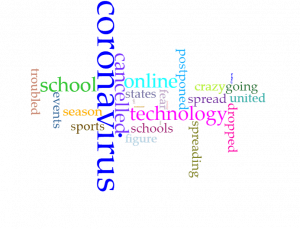 As students are journaling more and more during the COVID-19 school closures, their words offer valuable insights into their daily lives and the social-emotional challenges they face. One way teachers can get a quick visual handle on how students are feeling is to upload typed journal entries into platforms that create word clouds and other text mining functions. Voyant-Tools, a free platform, offers far more capability than just creating a word cloud (cirrus), but for student use, it can be used in a rather simple form. This guide explains how to get started. Or, watch the video demonstration. After students create their cirrus or word cloud, they can send an embedable link to the teacher or take a screen shot. Teachers could also collect student responses using Padlet or similar services.
As students are journaling more and more during the COVID-19 school closures, their words offer valuable insights into their daily lives and the social-emotional challenges they face. One way teachers can get a quick visual handle on how students are feeling is to upload typed journal entries into platforms that create word clouds and other text mining functions. Voyant-Tools, a free platform, offers far more capability than just creating a word cloud (cirrus), but for student use, it can be used in a rather simple form. This guide explains how to get started. Or, watch the video demonstration. After students create their cirrus or word cloud, they can send an embedable link to the teacher or take a screen shot. Teachers could also collect student responses using Padlet or similar services.